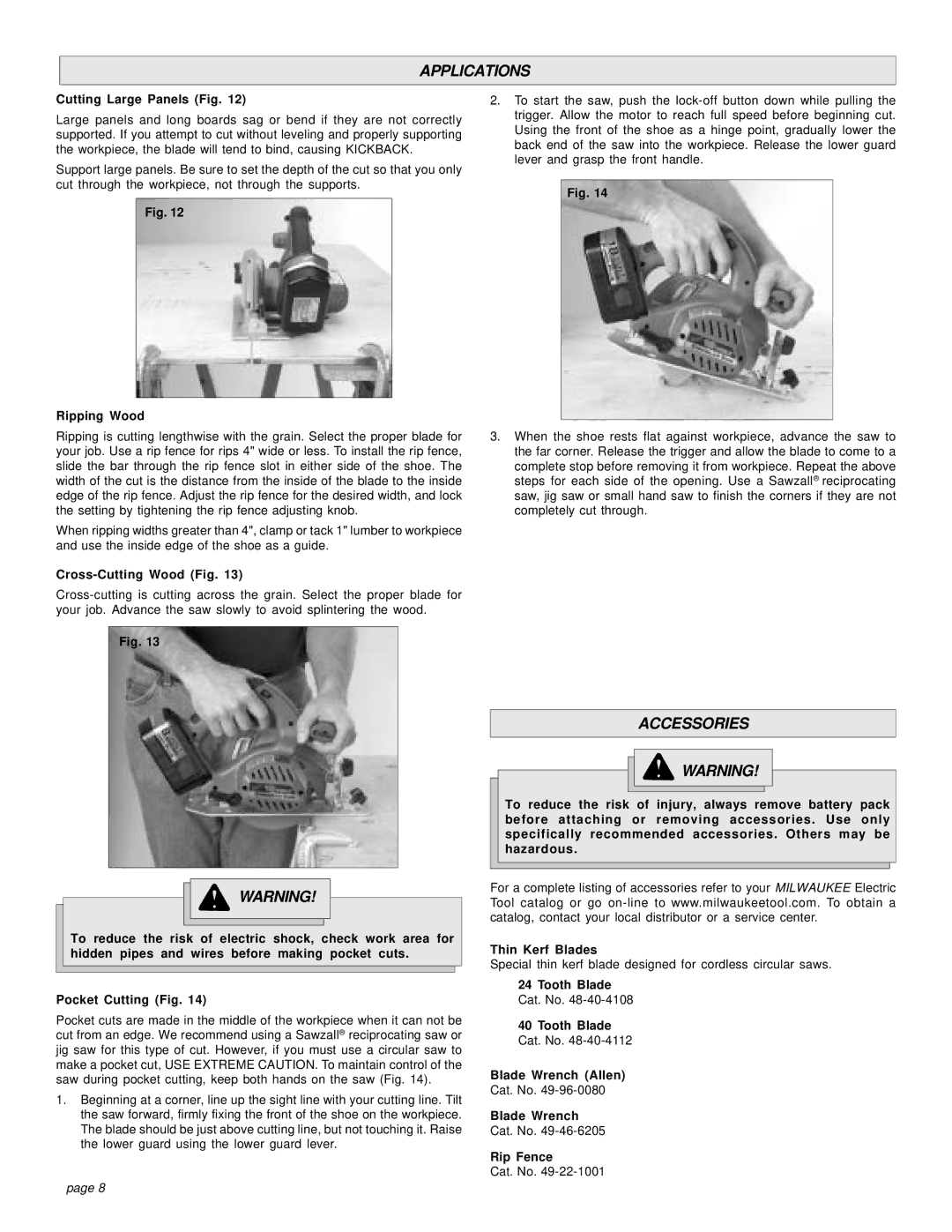
APPLICATIONS
Cutting Large Panels (Fig. 12)
Large panels and long boards sag or bend if they are not correctly supported. If you attempt to cut without leveling and properly supporting the workpiece, the blade will tend to bind, causing KICKBACK.
Support large panels. Be sure to set the depth of the cut so that you only cut through the workpiece, not through the supports.
Fig. 12
Ripping Wood
Ripping is cutting lengthwise with the grain. Select the proper blade for your job. Use a rip fence for rips 4" wide or less. To install the rip fence, slide the bar through the rip fence slot in either side of the shoe. The width of the cut is the distance from the inside of the blade to the inside edge of the rip fence. Adjust the rip fence for the desired width, and lock the setting by tightening the rip fence adjusting knob.
When ripping widths greater than 4", clamp or tack 1" lumber to workpiece and use the inside edge of the shoe as a guide.
Cross-Cutting Wood (Fig. 13)
Fig. 13
WARNING!
To reduce the risk of electric shock, check work area for hidden pipes and wires before making pocket cuts.
Pocket Cutting (Fig. 14)
Pocket cuts are made in the middle of the workpiece when it can not be cut from an edge. We recommend using a Sawzall® reciprocating saw or jig saw for this type of cut. However, if you must use a circular saw to make a pocket cut, USE EXTREME CAUTION. To maintain control of the saw during pocket cutting, keep both hands on the saw (Fig. 14).
1.Beginning at a corner, line up the sight line with your cutting line. Tilt the saw forward, firmly fixing the front of the shoe on the workpiece. The blade should be just above cutting line, but not touching it. Raise the lower guard using the lower guard lever.
2.To start the saw, push the
Fig. 14
3.When the shoe rests flat against workpiece, advance the saw to the far corner. Release the trigger and allow the blade to come to a complete stop before removing it from workpiece. Repeat the above steps for each side of the opening. Use a Sawzall® reciprocating saw, jig saw or small hand saw to finish the corners if they are not completely cut through.
ACCESSORIES
WARNING!
To reduce the risk of injury, always remove battery pack before attaching or removing accessories. Use only specifically recommended accessories. Others may be hazardous.
For a complete listing of accessories refer to your MILWAUKEE Electric Tool catalog or go
Thin Kerf Blades
Special thin kerf blade designed for cordless circular saws.
24 Tooth Blade
Cat. No.
40 Tooth Blade
Cat. No.
Blade Wrench (Allen)
Cat. No.
Blade Wrench
Cat. No.
Rip Fence
Cat. No.
page 8
